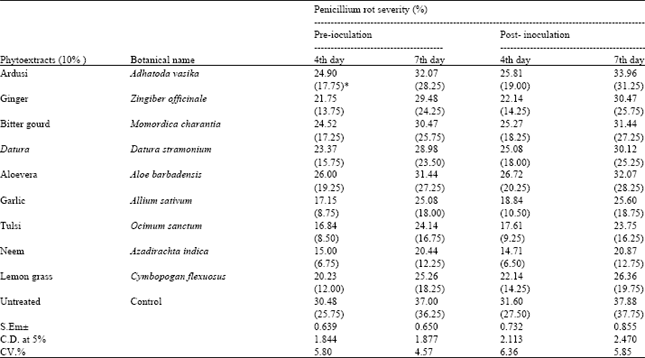Research Article
Use of Botanical Products for Breakdown the Parasitize of New Recorded Penicillium funiculosum of Aonla
Department of Plant Pathology, B.A. College of Agriculture, Anand Agricultural University, Anand-388 110 (Gujarat), India
R.K. Patil
Department of Plant Pathology, B.A. College of Agriculture, Anand Agricultural University, Anand-388 110 (Gujarat), India
Saurabh Singh
Department Mycology and Plant Pathology, I.A.S., Banaras Hindu University, Varanasi 221005, U.P., India
L.P. Balai
Department Mycology and Plant Pathology, I.A.S., Banaras Hindu University, Varanasi 221005, U.P., India
Rai Ajay Kumar
Department Mycology and Plant Pathology, I.A.S., Banaras Hindu University, Varanasi 221005, U.P., India










